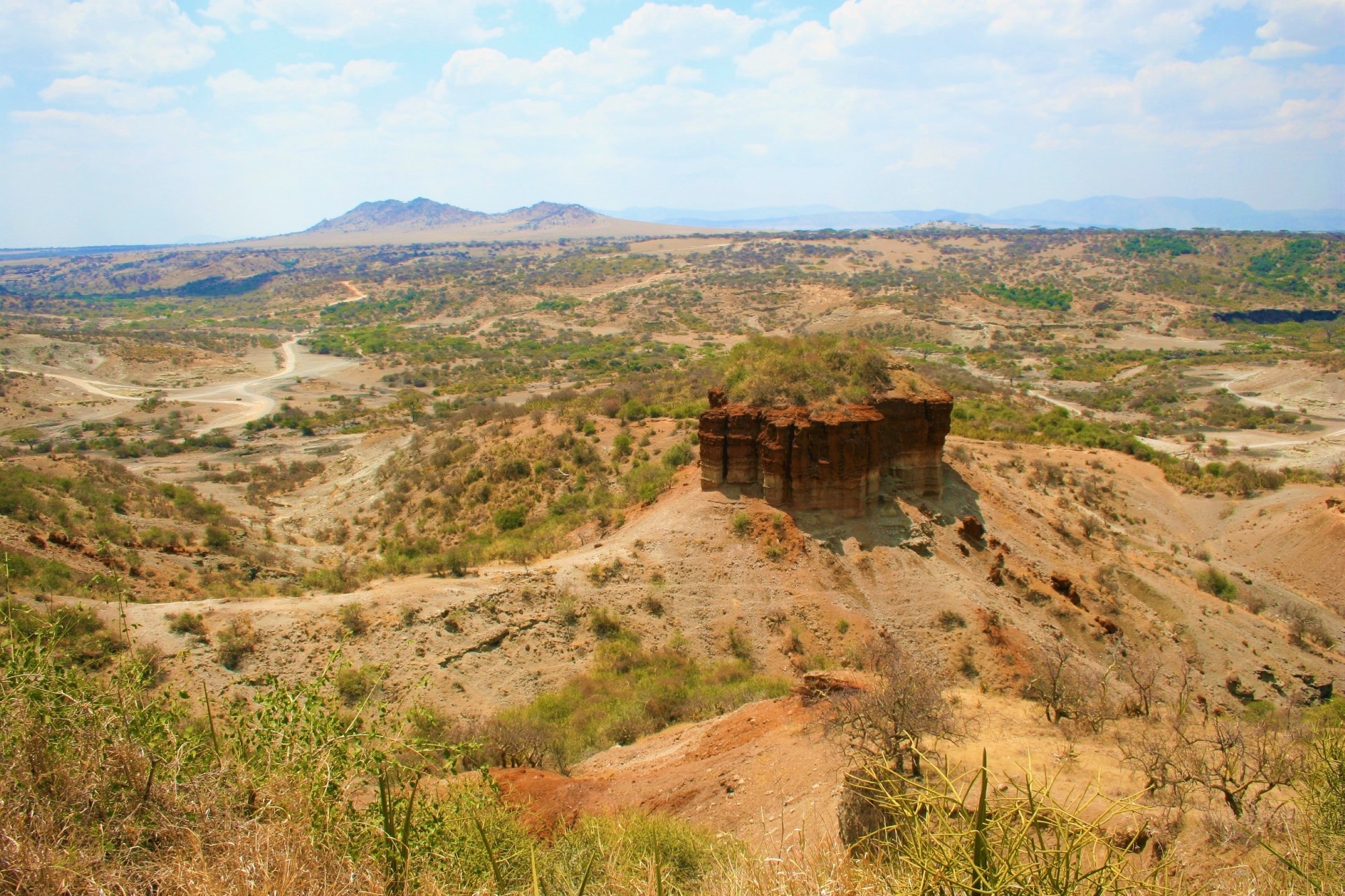New evidence reveals Homo erectus mastered survival in Tanzania’s ancient deserts, proving they were adaptable generalists long before modern humans emerged.
 Olduvai Gorge, Tanzania. Image Credit: t.m. urban / Shutterstock. Study: Homo erectus adapted to steppe-desert climate extremes one million years ago
Olduvai Gorge, Tanzania. Image Credit: t.m. urban / Shutterstock. Study: Homo erectus adapted to steppe-desert climate extremes one million years ago
In a recent article in the journal Communications Earth & Environment, researchers investigated when Homo erectus, an extinct species of archaic humans, adapted to hyperarid regions in Tanzania.
By reconstructing the environment of that time, which was dominated by semi-desert shrubland, they showed that this species occupied these difficult landscapes multiple times, thriving there one million years ago. Their findings challenge long-held views that early hominins were restricted to narrow ecological ranges.
Background
There is considerable debate on when early humans developed the ability to survive in extreme environmental conditions such as those found in rainforests and deserts. The conventional belief held that only Homo sapiens could survive in these harsh ecosystems in the long term, with earlier hominins thought to be restricted to more limited ecological ranges.
Previous research suggested that archaic hominins, like Homo ergaster and Homo habilis, were sensitive to environmental changes and confined to mosaic environments like forests and grasslands. These species were considered ecological specialists, lacking the ecological flexibility seen in Homo sapiens. However, new multidisciplinary evidence suggests that Homo erectus possessed a broader ecological plasticity, demonstrating adaptability that had previously been underestimated.
Their survival in extreme climates with either very high or low precipitation was believed to require specialized adaptations that only appeared with modern humans. However, this view was based on limited and fragmentary data from a few archaeological sites, raising challenges in understanding these early hominins’ full ecological and cultural adaptability. The study addresses this challenge by incorporating high-resolution environmental reconstructions across multiple disciplines.
About the study
Researchers reexamined the adaptability of Homo erectus in Africa, arguing that more than climatic factors shaped their ecological niche – it also involved overcoming cognitive and physiological challenges. They suggest that these hominins displayed behavioral resilience, employing strategic foraging and mobility patterns to mitigate environmental risks.
The researchers challenge the idea that Homo erectus were ecological specialists, suggesting instead that their generalist strategies developed far earlier than was previously believed, during the Middle Pleistocene Transition between 1.2 and 0.8 million years ago.
At Engaji Nanyori in Oldupai Gorge, Tanzania, an important early hominin site, researchers conducted research from multiple disciplines. They gathered large datasets from recently excavated areas, analyzed sedimentary layers, and established a precise chronological framework for Homo erectus fossils found during the 1960s. This study also leveraged cutting-edge biogeochemical analyses and palaeoclimate simulations to reconstruct past environments with unprecedented accuracy.
Using data from multiple sources, they reconstructed the environment, dominated by semidesert conditions during the early half of the Middle Pleistocene Transition.
Researchers examined geological samples using several analytical techniques. For geochemical analysis, electron microprobe and X-ray fluorescence were employed. Organic materials were extracted and analyzed for hydrocarbons using gas chromatography-mass spectrometry. Additionally, the study employed biomolecular approaches to track fire history and vegetation changes, offering deeper insight into the region’s palaeoecology.
Stable isotopes of carbon and oxygen were measured using isotope ratio mass spectrometry. Stone tools were geochemically characterized using X-ray fluorescence, and palynological analysis identified pollen and spores using light microscopy. Phytolith extraction followed specific chemical treatments to isolate and analyze silica structures from plant cells.
Findings
Between 1.2 and 0.9 million years ago, the landscape of the eastern Serengeti underwent significant changes due to tectonic activity and climate shifts. The movement of the Earth’s crust caused shifts in river paths, leading rivers to flow through floodplains with high levels of salt, calcium, and alkaline minerals.
Evidence of this includes the formation of certain minerals like calcretes and analcime. At the same time, a lake in the area, known as Palaeolake Oldupai, went through periods of drying, as shown by gaps in the sediment and signs of drought.
Researchers found that rivers from two regions – volcanic highlands and the Serengeti plains – merged near Engaji Nanyori, creating a complex system of river channels and floodplains. These channels left behind various types of sediments, like gravel, sand, and mud, which provide a detailed record of how the environment changed over time.
New evidence reveals Homo erectus mastered survival in Tanzania’s ancient deserts, proving they were adaptable generalists long before modern humans emerged.
One key discovery was that the presence of Homo erectus fossils in previously understudied sediment layers allowed researchers to refine existing timelines, dating these fossils to around 0.99 million years ago.
The area also showed signs of becoming more arid during this period, with desert-like conditions emerging. Fossil pollen analysis revealed that drought-resistant plants like Ephedra were common, indicating a dry, desert-like environment. This evidence aligns with palaeoclimate models suggesting the Sahara-like conditions extended much further south than previously thought.
Overall, this study provides a detailed look at how environmental and climate changes influenced the landscape and living conditions in the Serengeti region during the Middle Pleistocene Transition. It highlights the adaptability of early humans like Homo erectus to these challenging conditions.
Conclusions
The study challenges previous climate models, suggesting favorable conditions in northern Tanzania during this time period. Instead, it shows that the Oldupai region experienced extreme dryness, with desert-like environments and limited vegetation. The findings contrast with existing biome models, which overestimated the prevalence of woodland vegetation in the area.
Despite harsh conditions, Homo erectus demonstrated remarkable adaptability, using flexible strategies like adaptive foraging, tool use, and resource management to thrive. The evidence of repeated occupation at Engaji Nanyori, spanning thousands of years, points to their ability to establish long-term survival strategies despite the arid environment.
Evidence from Engaji Nanyori suggests prolonged human occupation of arid steppe deserts, highlighting early Homo erectus’ ability to persist in challenging environments.
This adaptability likely facilitated their spread across diverse ecosystems in Africa and beyond, reshaping our understanding of their ecological and geographical expansion during the Middle Pleistocene Transition. By demonstrating their resilience in extreme landscapes, the study provides new insights into how early humans responded to climate variability and resource scarcity.
Journal reference:
- Homo erectus adapted to steppe-desert climate extremes one million years ago. Mercader, J., Akuku, P., Boivin, N., Camacho, A., Carter, T., Clarke, S., Temprana, A.C., Favreau, J., Galloway, J., Hernando, R., Huang, H., Hubbard, S., Kaplan, J.O., Larter, S., Magohe, S., Mohamed, A., Mwambwiga, A., Oladele, A., Petraglia, M., Roberts, P., Saladié, P., Shikoni, A., Silva, R., Soto, M., Stricklin, D., Mekonnen, D.Z., Zhao, W., Durkin, P. Communications Earth & Environment (2025). DOI: 10.1038/s43247-024-01919-1, https://www.nature.com/articles/s43247-024-01919-1




